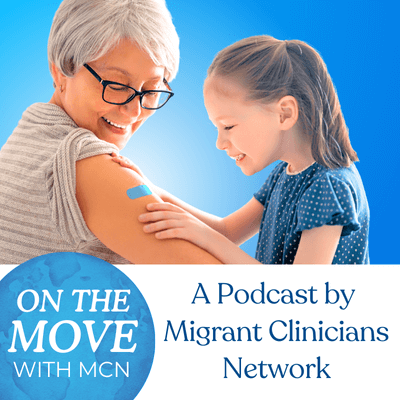World Refugees In Our Hometowns: Serving Unaccompanied Minors

Today is World Refugee Day. Here in the US, thousands of people arrive at our borders each year requesting asylum. Many of them are children who arrive without an adult. “Unaccompanied children” became a newsworthy search term in 2014, during the so-called “border surge” -- but less reported is that thousands of them still remain in litigation limbo as the backlogged courts struggle to work through the half a million pending immigration cases, each taking an average of two years to close.
Thousands of asylum seekers remain in our community -- and most do not receive the mental health services they need. In addition to the ongoing stressor of the unknown court date, many are adversely affected by separation from family members, culture shock, and a feeling of not belonging. Many of them still carry with them the pre-migration trauma of their home situation, which, for those coming from the Northern Triangle (which is comprised of El Salvador, Honduras, and Guatemala), may include gang violence and political instability. Still more carry peri-migration trauma, which may include human smuggling, extortion, violence, and danger as they trekked thousands of miles, some in extreme conditions, and post-migration trauma, which may include detention in the US before placement with a family.
Only a small percentage of unaccompanied children who qualify for the Office of Refugee Resettlement’s “home study program” — those who are identified as victims of severe forms of trafficking, of sexual or physical abuse, or are special needs — are provided with post-release services to connect the child and the child’s sponsor family with needed community resources for mental health concerns. This leaves community services like the outreach teams of community health centers and local humanitarian nonprofits to step up the task to identify and serve these underserved populations.
Here are a few tips for clinicians serving underserved populations:
- Identify Unaccompanied Children: During patient intake history, it is essential that clinicians identify patients who arrived as unaccompanied children. Their circumstances may require additional or different medical attention than the typical immigrant. Key questions to ask include: How old were you when you crossed the border? Were you caught at the border? Who were you with? Where were you sent?
- Get Basic Health Information: Once a patient is identified as an unaccompanied child, the attending clinician may request health records on the patient from the ORR here. Determine whether the patient intends to move again -- he or she may be eligible for enrollment in MCN’s bridge case management program, Health Network.
- Provide Basic Primary Care and Resources Information: As some sponsors may not have experience caring for a young child (for example, if a child is placed with an aunt who does not have any children herself), clinicians are encouraged to inform the family of the importance of regular primary care, of the concept of the patient-centered medical home, and of the resources available to the family, in the arenas of: routine exams and screenings to assess development, nutrition and growth, and vision and hearing; oral health; school readiness; and, sexuality and sexual health.
- Barriers to Affordable Care: Children who have been placed with sponsors do not have residency status and are ineligible for health care coverage in many parts of the country. Medicaid and CHIP requirements vary from state to state. Federally-qualified Health Centers are one of the few places these immigrants may turn for affordable care. Additional barriers to care include fear of deportation, language barriers, and cultural barriers.
- Common Mental Health Concerns: As mentioned above, unaccompanied children may have experienced pre-, peri-, and post-migration trauma. This may lead to increased mental health conditions like post-traumatic stress disorder (PTSD), depression, anxiety, and adjustment disorders.
- Reassessment: Periodic reassessment for mental health conditions is encouraged, as initial excitement upon being placed with family members in the US may wane.
- Common Social Concerns: A new family structure, a new culture and language, a new school environment -- these are just a few of the potentially stressful and difficult challenges that an unaccompanied child may face. Their home may be overcrowded or their family may be experiencing financial instability with the addition of another member. Family dynamics between the sponsor and the unaccompanied children may be an additional source of stress. Ask about their home life and fill out the full picture of their new reality.
Like what you see? Amplify our collective voice with a contribution.
Got some good news to share? Send it to us via email, on Facebook, or on Twitter.
Return to the main blog page or sign up for blog updates here.
- Log in to post comments






